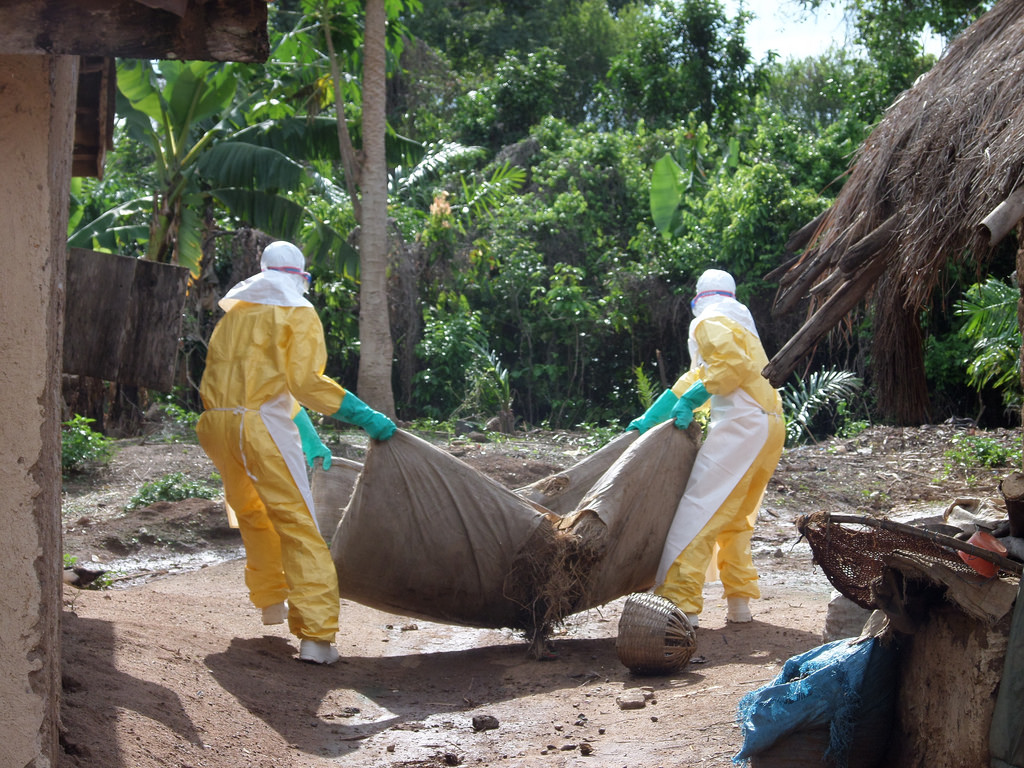
13 Facts About The Deadly Ebola Virus That You Didn’t Know
In the latest outbreak, 729 out of 1,323 known cases have been fatal. This current outbreak has carried the most infections and the most deaths ever in the known history of the disease.
The @emory isolation unit is physically separate from other patient areas. Abt to receive patient with #Ebola. 1st time in US history.
— Dr. Sanjay Gupta (@drsanjaygupta) July 31, 2014
A week ago, it had become clear that the Ebola virus outbreak in the West African countries of Guinea, Sierra Leone and Liberia was getting worse. Now, the U.S. has advised Americans not to travel there and two medical workers, Dr. Kent Brantly and Nancy Writebol, who became infected while working to fight the outbreak have been relocated to the states. One is going to be treated at Emory Hospital University in Atlanta where a specialized isolation chamber has been set up for the task.
Ebola is the most deadly virus currently in existence on the face of the Earth. Here are 13 facts about Ebola that you probably didn’t know.
1. Fruit bats are known to carry the virus and be unaffected by it much in the same way that Tigers can carry feline AIDS without any ill effect. Initial infections are often the result of eating Fruit bats or other bushmeat such as infected monkeys.

2. There is no cure. In the latest outbreak, 729 out of 1,323 known cases have been fatal. This current outbreak has carried the most infections and the most deaths ever in the known history of the disease.
3. There were 19 major outbreaks of the Ebola virus in Africa between 1979 and 2008.

4. It can take up to 21 days for the virus to incubate in a victim.
5. The mortality rate of the virus varies wildly but it is always very high, between 50 and 90%. For men, even if you survive the virus, you can carry it in your sperm for up to two months after full recovery.
6. In many cases, recovery isn’t 100%. Common problems that persist include:
inflammation of the testicles, joint pains, muscle pains, skin peeling, or hair loss. Eye symptoms, such as light sensitivity, excess tearing, iritis, iridocyclitis,choroiditis and blindness have also been described.
7. The family of viruses Ebola comes from is literally millions of years old. Fossilized virus samples have been found in fossil samples as far from Africa as China. According to this source, the current outbreak is not the result of any previously known or encountered version of the virus. It is 97% similar to a strand known as Ebola Zaire but it is not identical. That 3% can mean a lot.
8. Most strands of the virus aren’t airborne but they are all easily transmitted via bodily fluids including blood, sperm, diarrhea, vomit, and saliva. Yes, you can get it from kissing.
9. Transmission through blood is made more even more gruesome by one of the primary symptoms of Ebola, trouble with bleeding.
All people infected show some extent of coagulopathy and impaired circulatory system symptomology. Bleeding from mucous membranes and puncture sites is reported in 40–50% of cases, while maculopapular rashes are evident in approximately 50% of cases. Sources of bleeds include hematemesis, hemoptysis, melena, and aforementioned bleeding from mucous membranes (gastrointestinal tract, nose, vagina and gingiva). However diffuse bleeding (i.e. heavy) is rare; occurrence is usually exclusive to the gastrointestinal tract.
I find this somewhat fascinating considering the way Ebola is most commonly transmitted, through the ingestion of blood in bushmeat.
10. Both dogs and pigs can catch the virus. Dogs exhibit no symptoms while pigs absolutely do.

11. The most common and effective way to combat a viral outbreak is quarantining an area. Given the virus’s high mortality rate as well as the speed with which it can kill the victim, blocking off the infected from the uninfected will allow the virus to generally run its course and disappear. Everything used to treat the patients to include their surroundings must either be decontaminated or destroyed.
12. The only treatment prescribed for those who’ve contracted Ebola is to keep the victim’s fluids balanced as well as administering anti-coagulants to help with internal bleeding. Pain mitigation and maintaining the patients oxygen are also important.
13. This last one is the most disturbing. There is evidence that the most virulent and deadly strain of Ebola is, in fact, capable of transmission through the air. Specifically, Canadian scientists have been able to show that pigs can pass the virus on to monkeys. However, this transmission was limited to close proximity and is no way as communicable as, say, the flu. Still, the myth that this is only a disease that can be passed through bodily fluids is untrue.
Canadian scientists have shown that the deadliest form of the ebola virus could be transmitted by air between species.
In experiments, they demonstrated that the virus was transmitted from pigs to monkeys without any direct contact between them.
The researchers say they believe that limited airborne transmission might be contributing to the spread of the disease in some parts of Africa.
They are concerned that pigs might be a natural host for the lethal infection.











